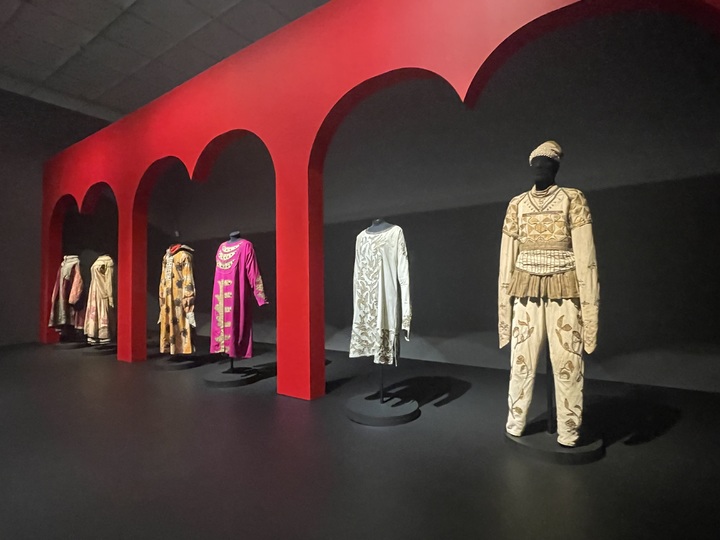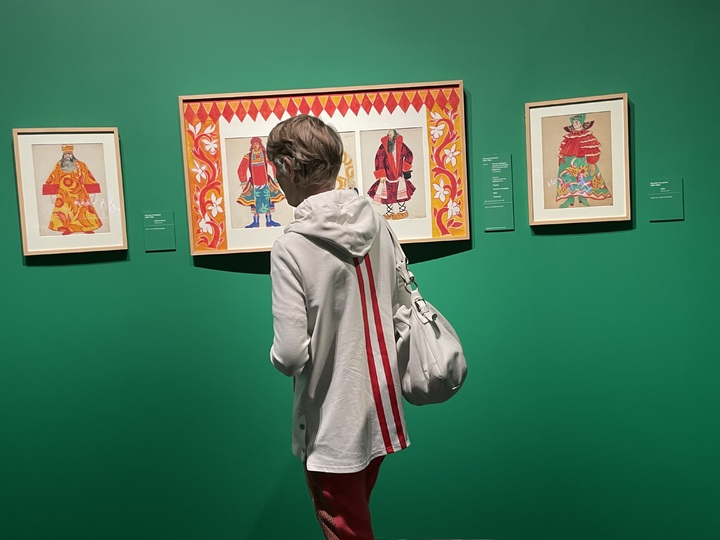From avant-garde sarcophagus to rooftop rehearsal
[ad_1]
The historical biopic is in trend today not only in cinema, but also in art. All the main exhibitions of this season are a direct confirmation of this. The focus is on different figures, their fate and activities, each project has its own architectural solution, mood, and narrative logic. But they are united by a focus on the individual in the context of their time and role in history and culture. Architect Konstantin Melnikov at the Shchusev Museum, People’s Commissar for Foreign Affairs Georgy Chicherin at the Moscow Kremlin Museums, Sergei Diaghilev at the New Tretyakov Gallery – “MK” assessed the key projects of the fall from a visual approach.
Konstantin Melnikov is more than an architect and a visionary
The exhibition “Melnikov/Melnikoff” in the enfilade of the Shchusev Museum of Architecture is, in fact, the first full-scale study of the life and work of Konstantin Melnikov. The project, dedicated to the 130th anniversary of the author of the Makhorka pavilion, the Bakhmetevsky garage, the Burevestnik club in Sokolniki and Svoboda on Vyatskaya Street, and finally, the creator of the Lenin sarcophagus, was supposed to open two years ago. But the pandemic disrupted the plans, which eventually benefited the study.
As a result, we have before us a large-scale biopic, where each hall, in shape and color scheme, refers to one or another architectural experiment by Konstantin Melnikov. Each “chapter” is devoted to a separate period of the master’s life – from apprenticeship to landmark architectural projects. The exposition opens with two portraits of Melnikov: one in black, the other in white. The fate of Konstantin Stepanovich was also filled with contrasts: until 1938 he was one of the most sought-after and respected architects of his time, and after that he was branded as a “formalist”, lost almost everything and until the end of his days he worked more and more “on the table”.
Melnikov’s personality is no less contrasting. On the one hand, he is an experimenter, visionary and revolutionary, on the other, a traditionalist. He grew up in a village hut in the Petrovsky-Razumovsky district, and this remained somewhere in the subcortex. So there is nothing surprising in the decor of his own house in Krivoarbatsky Lane: a “peasant” oval table in the living room, over which hangs a “grandmother’s” lampshade or a carved sideboard with a samovar. Melnikov appreciated and honored the traditions that were close and understandable to him. He received a multilateral education before the revolution, moreover, he first studied as an artist, and then transferred to architecture. He studied all the classical directions, not only in terms of style, but also an engineering approach. Thinking over the technical and design features of his buildings, he relied on the experience of generations. At the same time, he invented not just new forms of architecture, he thought in terms of space and
The exhibition begins with the question: who are you, Konstantin Melnikov? The answer gives the viewer rich material from documents, drawings, paintings, photographs and models (there are more than 200 exhibits in the exhibition). Melnikov is a dreamer and a doer. Most of his projects are like pipe dreams. And yet, some were embodied, others remained on paper, but that is why they are no less important for the history of architecture. Take at least a sarcophagus for Lenin’s Mausoleum. Melnikov proposed several options, one of them – an unusual, zigzag shape – won in a closed competition. But in the end, the idea did not work out, and was placed in a more classic sarcophagus. It is no coincidence that the curators put the tomb for Lenin on a par with the project, like “SLEEPING SONATA”, where, according to Melnikov’s idea, the main attention should have been paid to sleep. He is a dreamer who looked beyond the usual and transferred his dreams to reality.
Soviet diplomat in Japanese haori
The exhibition in the Patriarchal Palace of the Moscow Kremlin Museums “To the 100th Anniversary of the Formation of the USSR: Chicherin and Soviet Diplomacy” is a kind of screen version of the history of the Commissar for Foreign Affairs, the chief diplomat of the Soviet era, Georgy Chicherin. It is told not only through documents, photographs and other archival materials, but mainly through the costumes worn by the legendary Bolshevik.

Russian tunics, Japanese haori, colorful skullcaps, Persian robes – Chicherin was far from the classic image of a statesman. He believed that only by speaking with a partner in his language can success be achieved. Therefore, in the wardrobe of a diplomat there were a variety of costumes and each had its own story – a victory won by a word.
One of the brightest exhibits is the Mongolian winter one made of Chinese silk and satin with oriental patterns. But from the point of view of politics, more important, different, less catchy. This, oddly enough, is the tunic of a Red Army soldier. In it, Chicherin most often met with the ambassadors of other countries, as evidenced by many photos. The free-cut style of the “Strelletska caftan” was invented by the artist Mikhail Ezuchevsky, who returned from the Austrian captivity after the First World War.
But the moral of this fable is not only in how important it is that “the suit sits.” Chicherin was one of the most educated members of the Soviet government, a polyglot and familiar with different cultures. For example, he studied hieroglyphs and cuneiform. All this together helped him achieve trusting relations with representatives of other countries and assert the authority of the newborn state of the USSR.
Diaghilev: bright on gray
The exhibition with the laconic name “Dyagilev” differs from the above projects. Here you will not learn about what kind of person the founder of the “Russian Seasons” was, which brought worldwide fame to the national ballet. But all his main works – on the face and the juice itself.

The exposition is built as if we were in the theater on the eve of the premiere: on the side of us is a thick gray curtain, and on the left are sketches for the costumes of productions that have become legendary. About each, whether it is “The Rite of Spring” or “Russian Tales”, “Midnight Sun”, “Jester” or “Scheherazade”, it is told briefly, but interestingly. The main storytellers here are the costumes created according to the sketches of the great Natalia Goncharova, Henri Matisse, Lev Bakst, Valentin Serov, Nicholas Roerich and others. The drawings can be seen on the gray walls, and the outfits in which the dancers shone at the premieres are presented on yellow, blue , green or red background, as if on stage. And in the finale, the viewer enters a rehearsal in a mirror hall, in the center of which is a complex structure made of ballet barre sticks. At first glance, it seems that we have an original curatorial move, but no. Indeed, the dancers of the “Russian Seasons” rehearsed on such structures. They even climbed onto the roofs, as evidenced by photographs from 1915-20.
In a word, this biopic is no longer about Diaghilev, but about the ballet itself, about the creative process that allowed such a phenomenon as the Russian Seasons to come into being.
[ad_2]
Source link






